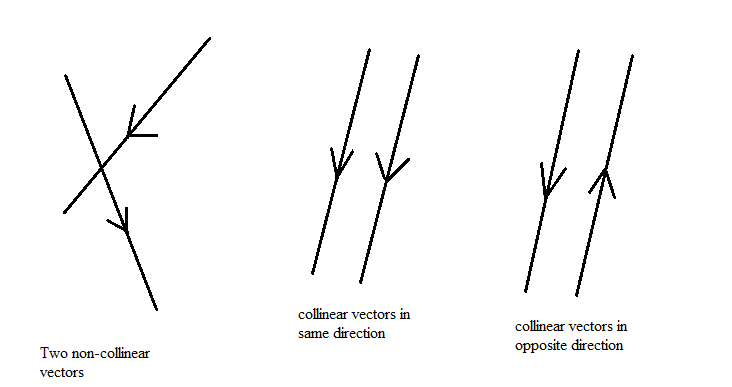
If
A.
B.
C.
D.
Answer
494.1k+ views
Hint: In this question, we will go for option verification and find out for which values of
Complete step-by-step answer:
Given
Also,
That implies
If

Now, we will go for the option verification to check whether the two vectors
A. By substituting
which is of the form
B. By substituting
which is an indeterminate form. So, for the values of
C. By substituting
which is of the form
D. By substituting
which is of the form
Therefore, only for the values of
Thus, the correct option is B.
So, the correct answer is “Option B”.
Note: We can use any of the given conditions to prove the collinearity for two vectors:
1. Two vectors
2. Two vectors are collinear if relations of their coordinates are equal.
3. Two vectors are collinear if their cross product is equal to the zero vector.
Complete step-by-step answer:
Given
Also,
That implies
If

Now, we will go for the option verification to check whether the two vectors
A. By substituting
which is of the form
B. By substituting
which is an indeterminate form. So, for the values of
C. By substituting
which is of the form
D. By substituting
which is of the form
Therefore, only for the values of
Thus, the correct option is B.
So, the correct answer is “Option B”.
Note: We can use any of the given conditions to prove the collinearity for two vectors:
1. Two vectors
2. Two vectors are collinear if relations of their coordinates are equal.
3. Two vectors are collinear if their cross product is equal to the zero vector.
Recently Updated Pages
Master Class 4 Maths: Engaging Questions & Answers for Success

Master Class 4 English: Engaging Questions & Answers for Success

Master Class 4 Science: Engaging Questions & Answers for Success

Class 4 Question and Answer - Your Ultimate Solutions Guide

Master Class 11 Economics: Engaging Questions & Answers for Success

Master Class 11 Business Studies: Engaging Questions & Answers for Success

Trending doubts
Give 10 examples of unisexual and bisexual flowers

Draw a labelled sketch of the human eye class 12 physics CBSE

Differentiate between homogeneous and heterogeneous class 12 chemistry CBSE

a Tabulate the differences in the characteristics of class 12 chemistry CBSE

Why is the cell called the structural and functional class 12 biology CBSE

Differentiate between insitu conservation and exsitu class 12 biology CBSE




